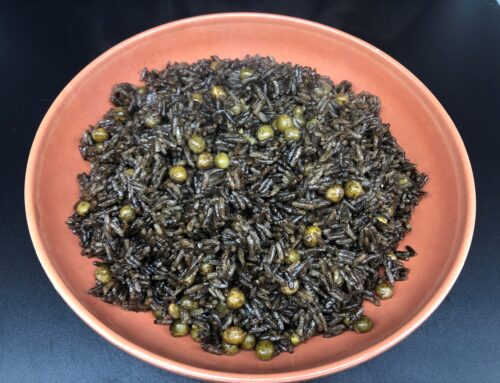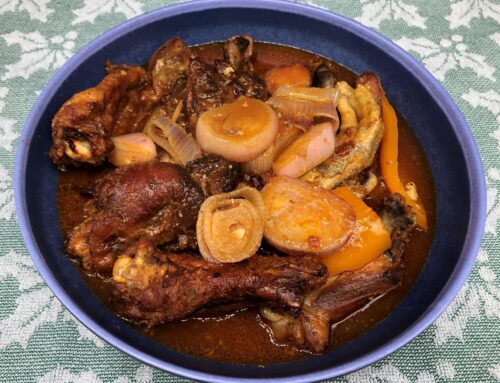The Taste of Haiti’s Independence – Pumpkin Soup
The thick concoction of pumpkin soup is made with pumpkin purée. Depending on how you like it, you can add some vegetables or meat to it. It is served cold and hot and is one of the most popular dishes at Thanksgiving dinners in the US.
A mere soup dish in the US, pumpkin soup holds a special place in Haitian cuisine. It contains different ingredients and is exceptionally rich in flavor. What sets it apart is the history behind it. Food has never been given such importance, the way Haitians hold pumpkin soup in such great regard.
History of Pumpkin Soup
History is not able to pinpoint with accuracy when pumpkin soup was introduced to the world. We know that this cuisine is a part of Namibia, Mozambique, and Northern Africa. The original pumpkin soup was often given to prisoners of war taken by the North Vietnamese. The soup was served in the Vietnam War camps and was considered a delicacy.
How Pumpkin Soup Became Soup Joumou
For enslaved Haitians, pumpkin soup ― also known as “Soup Joumou”―was something they craved but were never served. When Jean-Jacques Dessalines, a revolutionary leader of Haitian slaves, declared independence on January 1 in 1804, people were finally free from the French colonizers’ influence. The country celebrated by having soup joumou. The Independence Day food and music festival took place at the Place d’Armes in Gonaives.
Haitian Soup Joumou
Soup joumou, also known as the soup of freedom, is traditionally made with winter squash. This is the key ingredient and sets it apart from traditional pumpkin soup. In Haitian cuisine, soup joumou is served hot and sometimes with a side of bread to dip into it.
Ingredients
- Kabocha Squash – 1 Lb.
- Vermicelli (1 cup)
- Macaroni – Carolina (1 cup) – These kinds of macaroni are long.
- Leek (1/2)
- Carrots (3)
- Sweet potatoes(1 large) – Boniatos – violet outside and white inside
- Epis (2 Tbsp.)
- Turnip (1 small)
- Cilantro (1 cup)
- Potato (1 medium)
- Plantain (optional)
- Thyme and Parsley (1/4 cup worth) – Tie the thyme and parsley together
- Cabbage (3/4 cup) – Chopped large
- Water (23 cups)
- Beef and bones (2 lbs.)
- Cow feet (1/2 foot)
- Scotch bonnet or Habanero pepper (1)
- Cloves (4)
- Salt (2 Tsp)
- Celery (1 cup) – cut up
- Shallot or Onion (1)
- Maggi (1/2 Tablet)
- Bell peppers (1/3)
- Lime (2)
- Sour orange (1) – If you can find it, use less lime
- Lime juice (3/4 Tbsp.)
Directions
Cook the Squash
- Wash the squash and cut it in half. Use a spoon or a knife to remove all seeds. Add the squash to a pot with 8 cups of water. Allow the water to come to a boil and cook for 20 minutes on medium to high heat.
Prepare the meat
- Cut the cow foot and beef into pieces. Remove all fat from the beef. Squeeze lime juice or sour orange juice on the meat and rub the citrus on the meat. Add 1 Tsp. of salt and mix in the meat. Allow the meat to soak in the citrus and salt for 5-10 minutes. Rinse with cool water, drain, and add the epis. Allow the meat to marinate for at least 30 minutes or overnight if possible.
- Separate the cow feet from the beef before cooking. Cow feet take a while to cook, so it’s best to use a pressure cooker if you can. Add all the cow feet to a pressure cooker with 9 cups of water and cook for 30 minutes. Make sure the pot starts boiling before timing it.
- Add the beef to a medium pot with 1 cup of water and cook on medium heat for 30 minutes. Add the bell pepper, shallots or onion, Maggi, and cook for an additional 10 minutes.
- Once the cow feet and the beef are done, mix both, and slow cook for about 5 minutes.
The Soup
- Cut all the vegetables (i.e., carrots, sweet potatoes, potatoes, cabbage, turnip) and add to a large pot. Blend half the kabocha in a blender for 1-2 minutes and add to the pot of vegetables. Make sure to blend the kabocha with the same water that was used for cooking it. Blend the second half and add to the pot. Some people remove the skin, and others strain the kabocha, but this is optional. It’s best if you do not remove the skin or strain the kabocha. Add 5 cups of water to the pot. Add the leek, (thyme, and parsley tied together), cilantro, the hot pepper poked with cloves, 1 Tsp salt, and cook on medium heat. Poke the pepper with the cloves to prevent someone from eating a clove by accident. Cloves do not taste good.
- Bring the soup to a boil and add the beef, cow feet, along with the broth. Add the macaroni and cook for 15 minutes.
- Add the vermicelli and lime juice and cook for an additional 15 minutes. You may choose to crush the vermicelli with your hands. It’s best to use vermicelli instead of spaghetti because you can’t eat spaghetti with a spoon.
- The soup is ready! Turn off the stove and remove the hot pepper with cloves, thyme, parsley, and cilantro.
*Serves up to 7 people.
*Prep time: 2-2.5 hours.
In traditional pumpkin soup, the ingredients are turned into a purée, whereas soup joumou has chunks of vegetables and meat. Moreover, the addition of vermicelli and macaroni adds a unique touch to it.
Maybe, you have been having pumpkin soup the wrong way this whole time. So, why not give soup joumou a chance to blow your mind and taste buds away? After all, this soup is what Haitian independence is all about. Of course, it’s extremely special!





Leave A Comment